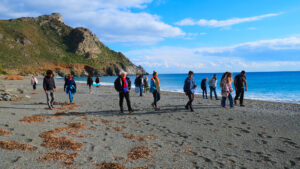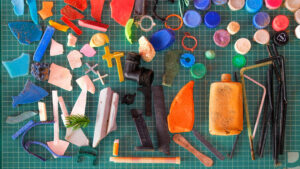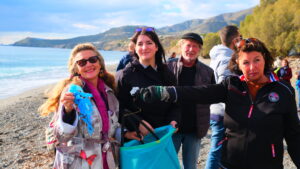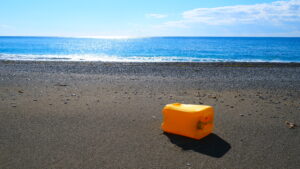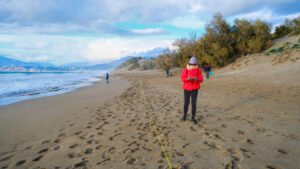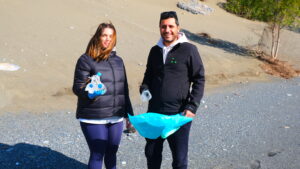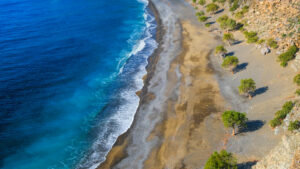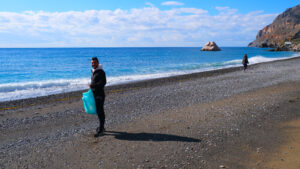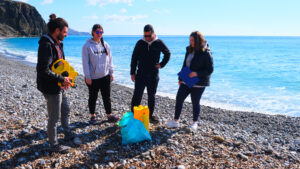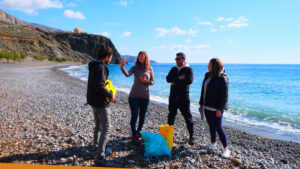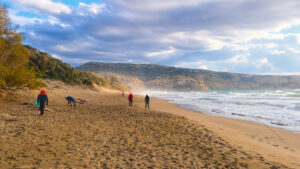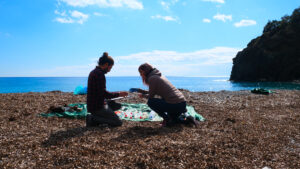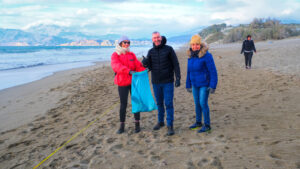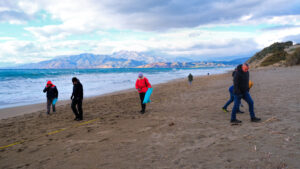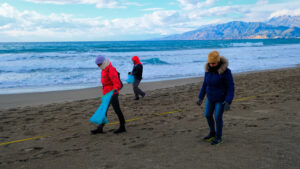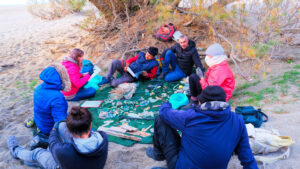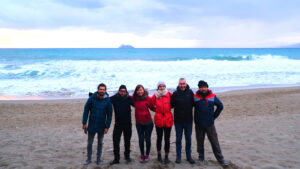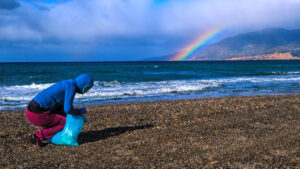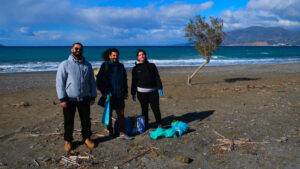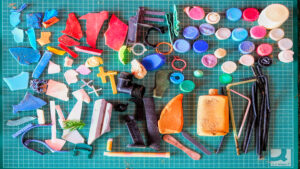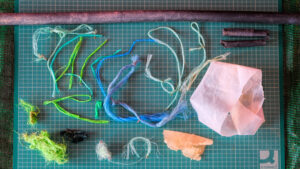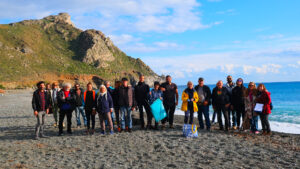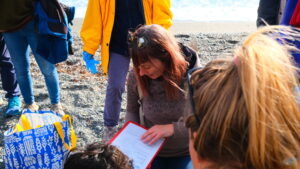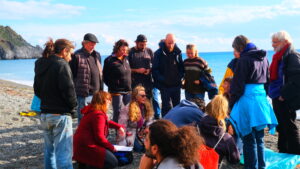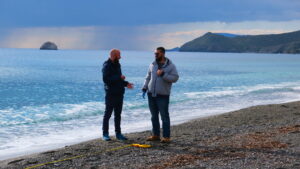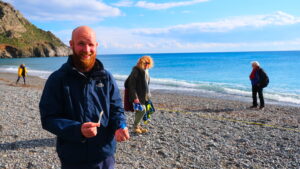Just as other biosphere reserves and protected areas, the Asterousia Biosphere Reserve is increasingly being affected by marine litter, which is building up, threatening habitats and species and inhibiting sustainable development. With the aim of improving the marine litter knowledge and evidence base in the biosphere reserve, MIO-ECSDE kick-started this week the first community-based marine litter monitoring campaign.
- © Th. Vlachogianni
- © Th. Vlachogianni
- © Th. Vlachogianni
A set of six locations were successfully surveyed and 856 litter items were collected and classified, with the involvement of 115 local community members, including grassroot NGO members, teachers and school children of the 2nd primary school of Tympaki, researchers and citizens. The preliminary results show that half of the surveyed beaches exceeded the European beach litter threshold value of 20 items/100m, by 8 to 14 times, signalling the need for action. The most frequently found items were food consumption and recreation related, while in several locations many items were agriculture related.
The marine litter campaign was well-received and well-appreciated by all participants that joined the MIO-ECSDE team at the beaches of Tris Ekklisies, Pahia Ammos, Dytikos (Lentas), Psili Ammos (Platia Peramata), Kommos and Avrathias.
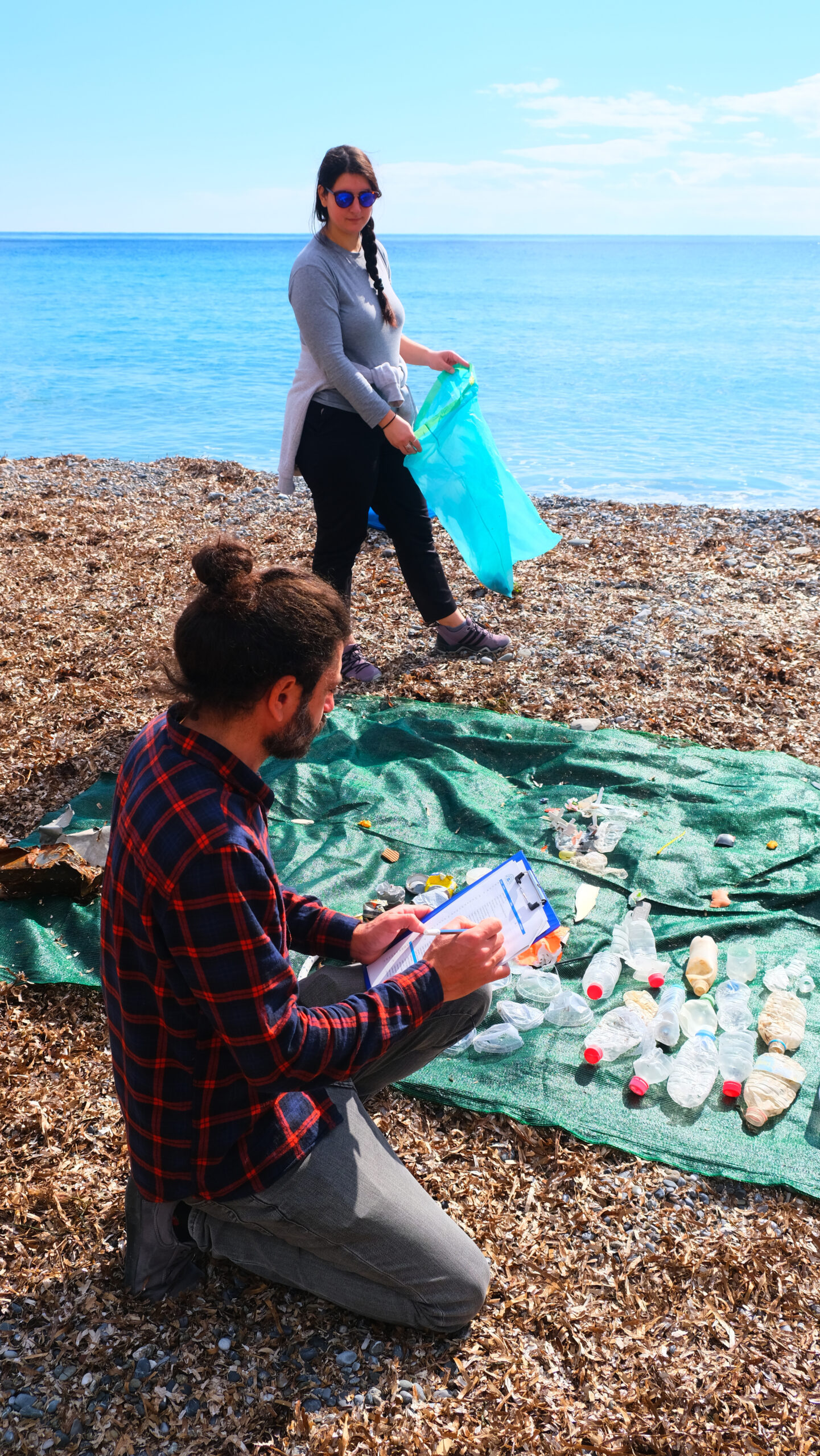
© Th. Vlachogianni
Ms Gina Bily Kraft, Communication Officer of the Association of Volunteer Firefighters and Environmental Protection of Asterousia stated: “The first field visit from the MIO-ECSDE team to the Lentas area filled my heart with joy. It was interesting, informative and valuable to experience first-hand the team’s passion for protecting the Asterousia Biosphere reserve — and its scientific method of collecting, examining, and coding marine litter. The community-based research approach was the perfect opportunity to involve more local residents and long-term visitors in the on-going, grassroots level work of taking better care of this incredible part of the planet. Perhaps for me personally, the most valuable part of this project is its community-based aspect that gives “non-scientists” of almost any age or ability, the chance to be involved in research activity that directly impacts the world they live in. It raises awareness while giving people a hands-on chance to act positively and also see that working together to try and help solve a problem is also lots of fun.”
Mr. Menelaos Lydakis, Civil Engineer and member of the local association of the Friends of Tris Ekklisies said: “We warmly thank the MIO-ECSDE team that visited us at the Tris Ekklisies beach! The community-based beach litter campaign they organized is very important for deepening our understanding on the amounts and sources of marine litter in the Asterousia Biospere Reserve. We think that this campaign will be a powerful tool for raising the awareness of local communities and we look forward to the research results.”
The participatory science campaign implemented in the Asterousia Biosphere Reserve deployed a harmonized monitoring approach, following the “Guidance Document on Monitoring of Marine Litter in European Seas” and the “Joint List of Litter Categories for Marine Macrolitter Monitoring” developed by the Technical Group on Marine Litter of the Marine Strategy Framework Directive, a European Union legislation that aims to protect Europe´s seas and ensure its sustainable use.
The campaign was implemented within the framework of the one-year-long project entitled “Monitoring marine litter and generating fit-for-purpose data through a participatory science approach in Asterousia Biosphere Reserve” funded by UNESCO and the abrdn Charitable Foundation. MIO-ECSDE together with the Local Management Committee of Asterousia & Heraklion Development Agency, MEdIES, HCMR, the University of Crete and its Museum of Natural History seek to provide a concrete showcase of how community-based research can deliver the “Science We Need for the Future We Want”, within the context of the UN Ocean Science Decade and the Ocean Literacy Framework.
Read this in Greek here
Read this in French here
- © Th. Vlachogianni
- © Th. Vlachogianni
- © Th. Vlachogianni
- © Th. Vlachogianni
- © Th. Vlachogianni
- © Th. Vlachogianni
- © Th. Vlachogianni
- © E. Korkidi
- © Th. Vlachogianni
- © Th. Vlachogianni
- © E. Korkidi
- © G. Paneris
- © Th. Vlachogianni
- © Th. Vlachogianni
- © Th. Vlachogianni
- © Th. Vlachogianni
- © E. Korkidi
- © G. Paneris
- © Th. Vlachogianni
- © Th. Vlachogianni
- © Th. Vlachogianni
- © Th. Vlachogianni
- © E. Korkidi
- © E. Korkidi
- © Th. Vlachogianni
- © Th. Vlachogianni
- © Th. Vlachogianni
